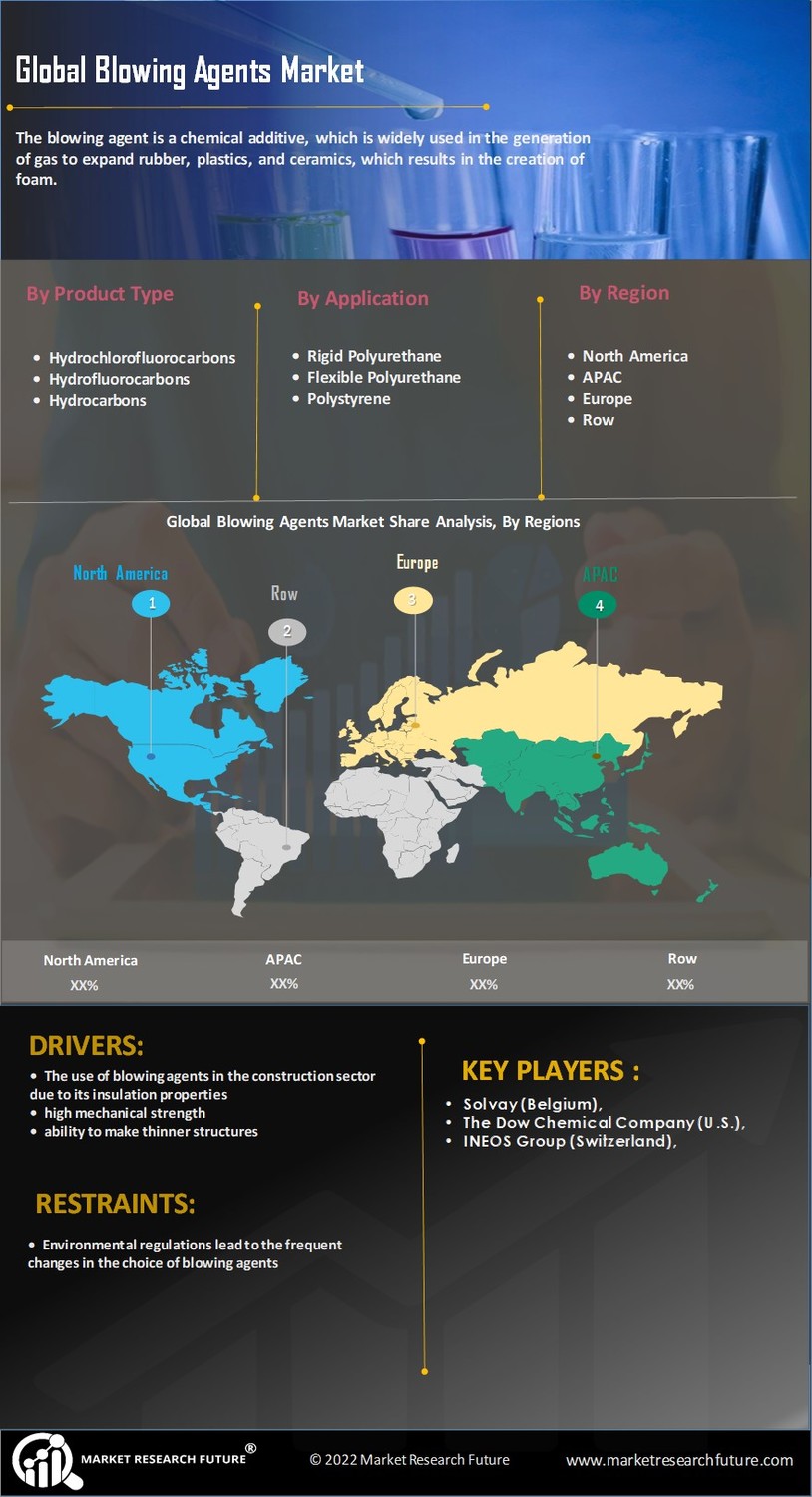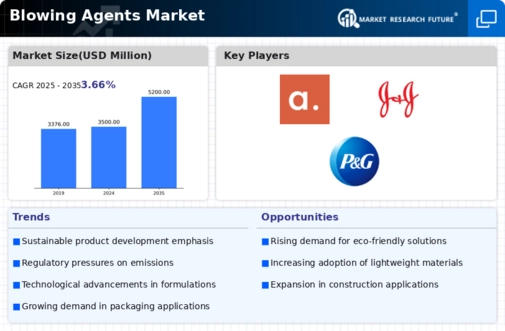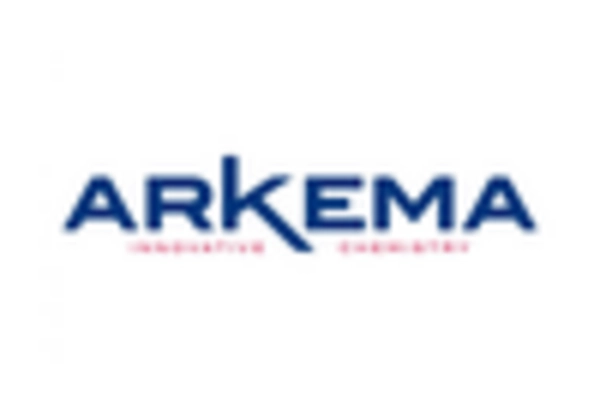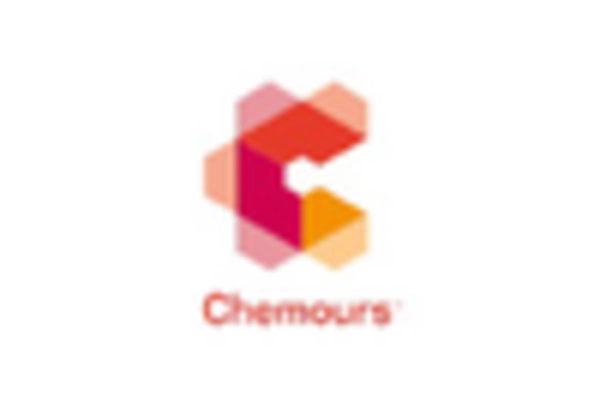Growth in the Construction Sector
The construction sector's expansion significantly influences the Global Blowing Agents Market Industry. As urbanization accelerates globally, the demand for insulation materials, which often utilize blowing agents, rises. This trend is particularly evident in emerging economies, where infrastructure development is a priority. The increasing focus on energy-efficient buildings further propels the need for effective insulation solutions. Consequently, the Global Blowing Agents Market Industry stands to benefit from this growth, with a projected compound annual growth rate (CAGR) of 3.66% from 2025 to 2035. This growth trajectory highlights the critical role of blowing agents in meeting the evolving needs of the construction industry.
Increased Application in Packaging
The packaging industry significantly contributes to the growth of the Global Blowing Agents Market Industry. Blowing agents are integral in producing foams used in protective packaging materials, which are essential for safeguarding products during transportation. The rise in e-commerce and online shopping has amplified the demand for efficient packaging solutions, thereby driving the need for blowing agents. As companies seek to enhance product safety and reduce material usage, the market for blowing agents is expected to flourish. This trend indicates a robust future for the Global Blowing Agents Market Industry, as it adapts to the evolving needs of the packaging sector.
Rising Demand for Lightweight Materials
The Global Blowing Agents Market Industry experiences a notable increase in demand for lightweight materials across various sectors, particularly in automotive and construction. As manufacturers strive to enhance fuel efficiency and reduce emissions, the adoption of lightweight materials becomes paramount. This trend is expected to drive the market for blowing agents, which are essential in producing foams and other lightweight composites. The market is projected to reach 3500 USD Million in 2024, reflecting a growing recognition of the benefits of lightweight solutions. Consequently, the Global Blowing Agents Market Industry is poised for expansion as industries increasingly prioritize sustainability and performance.
Regulatory Support for Eco-Friendly Solutions
The Global Blowing Agents Market Industry is positively impacted by regulatory frameworks promoting eco-friendly solutions. Governments worldwide are implementing stringent regulations aimed at reducing greenhouse gas emissions and encouraging the use of sustainable materials. This regulatory support fosters innovation in the development of blowing agents that are less harmful to the environment. For instance, the phase-out of ozone-depleting substances has led to the increased adoption of alternative blowing agents. As a result, the market is likely to witness sustained growth, driven by both compliance requirements and consumer demand for greener products, further solidifying the position of the Global Blowing Agents Market Industry.
Technological Advancements in Blowing Agent Production
Technological innovations play a crucial role in shaping the Global Blowing Agents Market Industry. Advances in production techniques, such as the development of more efficient and environmentally friendly blowing agents, contribute to market growth. For instance, the introduction of water-based and non-flammable blowing agents aligns with stringent environmental regulations, appealing to manufacturers seeking compliance. These advancements not only enhance the performance of blowing agents but also reduce their environmental impact. As a result, the market is anticipated to grow, with projections indicating a value of 5200 USD Million by 2035, underscoring the importance of technological progress in driving the Global Blowing Agents Market Industry.

















Leave a Comment